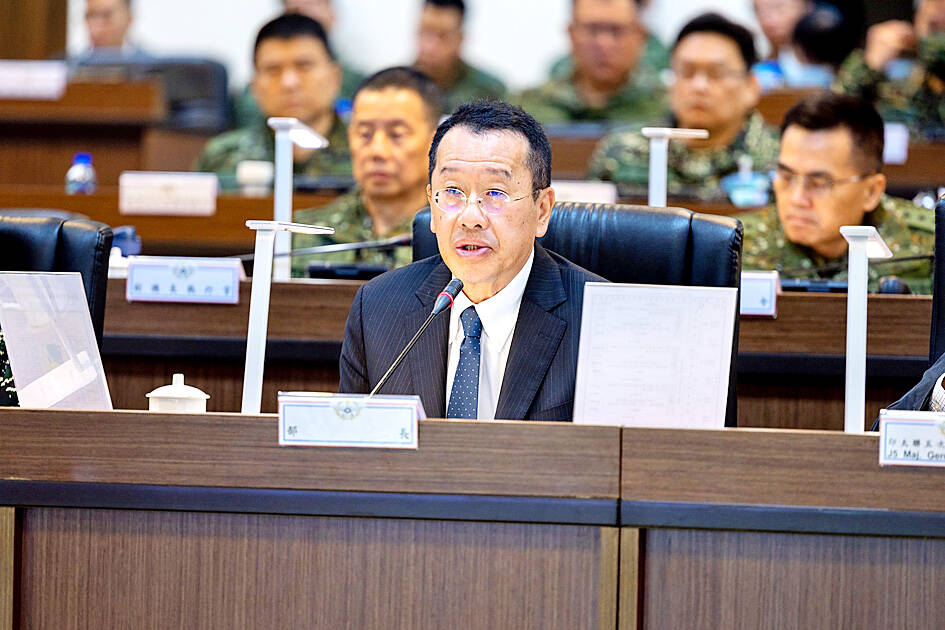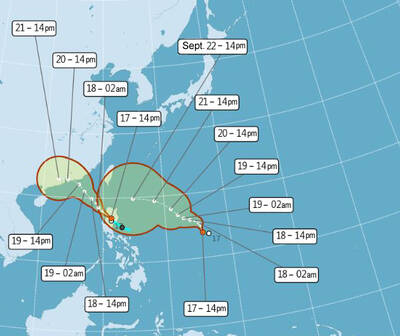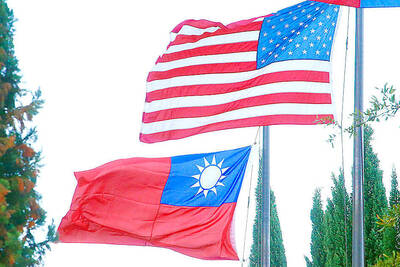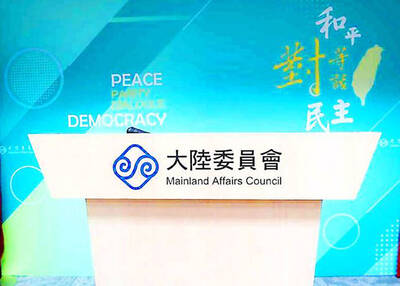The military has released a photograph of Minister of National Defense Wellington Koo (顧立雄) appearing to sit beside a US general during the annual Han Kuang military exercises on Friday last week in a historic first.
In the photo, Koo, who was presiding over the drills with high-level officers, appears to be sitting next to US Marine Corps Major General Jay Bargeron, the director of strategic planning and policy of the US Indo-Pacific Command, although only Bargeron’s name tag is visible in the seat as “J5 Maj General.”
It is the first time the military has released a photo of an active US general participating in a military exercise with Taiwan’s defense minister.

Photo courtesy of Military News Agency
However, the military later edited and replaced the photo, cropping out the name tag.
Bargeron was commanding general of the 3rd Marine Division from November 2021 to June 2023. During that time, he discussed many military exercises between the US and the Philippines, including Balikatan and Kamandag.
The US Joint Chiefs of Staff is divided into eight departments: J1 is labor and personnel; J2 is intelligence; J3 is operations; J4 is logistics; J5 is strategy, plans and policy; J6 is command, control, communications and computers; J7 is joint force development; and J8 is force structure, resources and assessment.
Bargeron serves under the J5 division as a director of strategic planning and policy.
Although Taiwan and the US typically keep a low profile when it comes to military collaboration, in the past few years, they have had increasingly frequent exchanges.
For example, retired rear admiral Michael Studeman visited Taiwan in April 2020, when he was director of intelligence of the US Indo-Pacific Command. At the time, the Presidential Office, Ministry of Foreign Affairs and Ministry of National Defense did not provide further comment on the visit.
In January that year, Brigadier General Matthew Isler joined the memorial service for a Black Hawk helicopter crash with then-American Institute in Taiwan director Brent Christensen.
During Friday’s exercises, Koo said he was focused on three key points: combining reasonable plans with practical verification, reviewing the force structure to develop asymmetric combat capabilities and monitoring warning signs for pre-emptive defense deployments.
Considering enemy threats and operational constraints, the military is reviewing weaponry, staffing resources, and mobilization and recovery forces to adjust defense strategies and revise joint operational plans, he said.
The Han Kuang exercises assess coordination between units, which would later be integrated into computer-assisted command post exercises and live drills, he said.
Senior officers should enhance assessment and decisionmaking skills through combat readiness drills, enabling them to escalate defense levels and issue mobilization orders when necessary, Koo said.
Forces should be reorganized based on actual capabilities, mission requirements, reserve expertise and force recovery timelines, he said.
Asymmetric, mobile, agile, precise and covert operational capabilities are crucial to ensuring the military can effectively meet defense needs, he added.
This year’s Han Kuang exercises have been extended to 10 days and nine nights.
In addition to sharpening the forces’ ability to respond to military and “gray zone” threats, the exercises would also assess the mobilization and formation of the army’s 206th Brigade, integrating it into live combat training, the military said.
Additional reporting by Aaron Tu and Wu Che-yu

Taiwan is projected to lose a working-age population of about 6.67 million people in two waves of retirement in the coming years, as the nation confronts accelerating demographic decline and a shortage of younger workers to take their place, the Ministry of the Interior said. Taiwan experienced its largest baby boom between 1958 and 1966, when the population grew by 3.78 million, followed by a second surge of 2.89 million between 1976 and 1982, ministry data showed. In 2023, the first of those baby boom generations — those born in the late 1950s and early 1960s — began to enter retirement, triggering

One of two tropical depressions that formed off Taiwan yesterday morning could turn into a moderate typhoon by the weekend, the Central Weather Administration (CWA) said yesterday. Tropical Depression No. 21 formed at 8am about 1,850km off the southeast coast, CWA forecaster Lee Meng-hsuan (李孟軒) said. The weather system is expected to move northwest as it builds momentum, possibly intensifying this weekend into a typhoon, which would be called Mitag, Lee said. The radius of the storm is expected to reach almost 200km, she said. It is forecast to approach the southeast of Taiwan on Monday next week and pass through the Bashi Channel

NO CHANGE: The TRA makes clear that the US does not consider the status of Taiwan to have been determined by WWII-era documents, a former AIT deputy director said The American Institute in Taiwan’s (AIT) comments that World War-II era documents do not determine Taiwan’s political status accurately conveyed the US’ stance, the US Department of State said. An AIT spokesperson on Saturday said that a Chinese official mischaracterized World War II-era documents as stating that Taiwan was ceded to the China. The remarks from the US’ de facto embassy in Taiwan drew criticism from the Ma Ying-jeou Foundation, whose director said the comments put Taiwan in danger. The Chinese-language United Daily News yesterday reported that a US State Department spokesperson confirmed the AIT’s position. They added that the US would continue to

The number of Chinese spouses applying for dependent residency as well as long-term residency in Taiwan has decreased, the Mainland Affairs Council said yesterday, adding that the reduction of Chinese spouses staying or living in Taiwan is only one facet reflecting the general decrease in the number of people willing to get married in Taiwan. The number of Chinese spouses applying for dependent residency last year was 7,123, down by 2,931, or 29.15 percent, from the previous year. The same census showed that the number of Chinese spouses applying for long-term residency and receiving approval last year stood at 2,973, down 1,520,